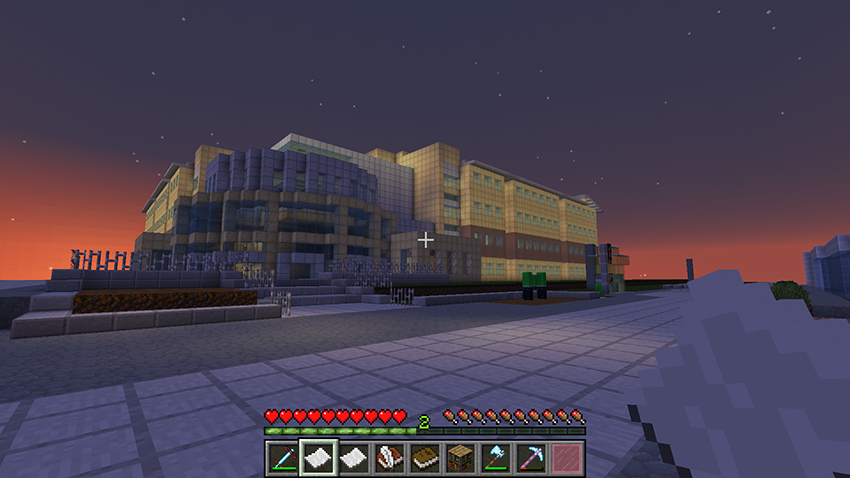Minecraft may become the building block to a solid understanding of chemistry.
UT Dallas professors have developed Polycraft World, additional content for Minecraft, that teaches players about a variety of chemical topics, including oil refining and constructing synthetic chemicals.
“Our ultimate goal is to be able to teach an entire course using video games,” said UTD chemistry professor Ronald Smaldone. “We had to make sure we had fun things in the game so that you’d play and learn it.”
The addition introduces new elements to the original Minecraft game, such as chemical processors and oilfields, and is available for free. It has already been downloaded several thousand times, according to Smaldone.
“In Minecraft, you’re essentially putting little building blocks together to make something else, and we do the same thing with molecules,” Smaldone said. “It’s still the same mechanics — you take a little icon and put in a certain pattern, but we needed new items to make (the game) feel a little more realistic.”
Smaldone said that although this new game isn’t the first to introduce science through a video game format, it is the most comprehensive and in-depth.
In Minecraft, users normally “mine” for resources. Polycraft World includes thousands of new items for players to mine, such as cobalt, silver and other periodic table elements. After obtaining these materials, a player can use them to make a variety of other items, such as pogo sticks, tennis shoes and rubber blocks.
Smaldone said Polycraft World is successful at teaching college-level chemistry because players are incentivized to keep building and mining for new elements.
“A lot of in-depth material is kind of esoteric, so teaching a ten-year-old … isn’t easy to do,” Smaldone said. “But if a player needs to synthesize a molecule to make rubber to make a gadget that you’d need to make a jetpack, then they’ll be incentivized to learn the more difficult materials.”
UT chemistry freshman Jaydin Phuoc Ngo said the idea of a video game class is intriguing but presents several challenges.
“It’s definitely interesting and accessible to many people who may not have the opportunity to learn this material elsewhere,” Ngo said. “But you can’t get a hands-on experience of chemistry, such as lab (work), and I think that’s the most important thing. For learners who need actual hands-on experience, the (new game) cannot offer that.”
Additionally, Ngo said that players may become too focused on playing the game rather than understanding or absorbing the material.
But, Smaldone said this level of engagement is exactly what makes the video game a unique format for teaching.
“Students sitting in a lecture, just because they’re hearing the words, may not necessarily get the material,” Smaldone said. “(A video game) allows the students to get engaged and really truly interact with the material, and that’s beneficial for everyone.”
Smaldone said preliminary results have shown that players who have not taken any chemistry courses can still answer questions about complex chemistry after playing the game for a few months.
Although Polycraft World is currently limited to chemistry, the team is considering incorporating different educational subjects in the future and collaborating with the gaming industry.
“We’re looking at ways to move this forward into government, economics and other complex materials,” Smaldone said. “The short term goal is to make a course where we can teach an entire subject using a video game and analyze the player.”















